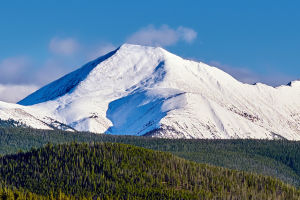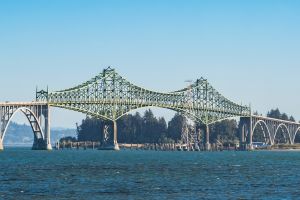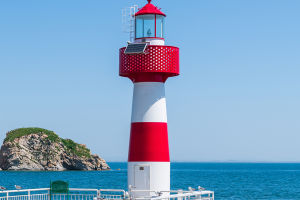An iconic symbol of the Southwestern USA, Monument Valley is a desert landscape punctuated by red sandstone formations, slender pinnacles, and massive buttes, straddling the Arizona-Utah state line about 508 kilometers north of Phoenix, Arizona.
Over millions of years, the forces of wind and water have sculpted this starkly fantastic land. It is part of the Navajo Nation, the near 7-million-hectare home of the Navajo tribe.
Early Hollywood filmmakers brought Monument Valley to the world’s attention with movies like Stagecoach starring John Wayne (1939). The region has been a star attraction for generations of travelers ever since.
What to See
From the park’s visitor center, the first view of Monument Valley is a panorama seen in countless photos and movies. In the distance, rising abruptly from the desert floor, are the valley’s three most prominent monoliths: the East and West Mitten Buttes (so named because they resemble hands with separated thumbs) and Merrick Butte.
The park’s 27-kilometer Valley Drive dirt road runs from the visitor center through the heart of the valley. Though rough and bumpy, the road doesn’t pose a problem for most passenger cars if driven carefully in dry conditions.
Along the drive, nearly a dozen turnouts offer superb views of sandstone monuments with fitting names like Elephant Butte and the Totem Pole. While snapping photos and stretching your legs, be aware that hiking into the desert is prohibited.
At the most popular stop, John Ford’s Point, browse wooden stalls where the Navajo sell jewelry, pottery, and other crafts. The sweeping, dramatic view is named after film director John Ford, who made the valley a setting for several Western movies, including Stagecoach.
Allow two hours to drive the entire route at a leisurely pace.
What to Do
Dear Lykkers! Though Valley Drive is flush with scenic highlights, many visitors long to explore more of this magnificent landscape. The only way to do so is on Navajo-guided tours that visit areas off-limits to independent travelers.
On the popular 3.5-hour tours, climb aboard a four-wheel-drive, flatbed truck with seating for 20 passengers. In addition to Valley Drive, the tour explores the backcountry, offering views of sandstone arches like the Sun’s Eye and the dramatic, circular Ear of The Wind. Some guides will even sing a traditional Navajo song to make the experience complete.
For a more private and customized experience, companies offer four-wheel-drive trips in Monument Valley and nearby Mystery Valley, focusing on interests such as photography and Native American rock art. Guided horseback rides and hikes are also available.
The only hiking trail in the park that can be walked without a Navajo guide is the mostly level 5.1-kilometer Wildcat Trail, which loops around West Mitten Butte. The sandy path typically sees little foot traffic, and visitors can view the immense butte from all angles. The trailhead is at the edge of the visitor center parking lot. Allow 2.5 hours, carry plenty of water, and avoid midday heat in summer when temperatures often top 32 degrees Celsius.
Western movie fans won’t want to miss Goulding’s Trading Post Museum at Goulding’s Lodge. The building, which served as “John Wayne’s cabin” in She Wore a Yellow Ribbon (1949), has displays on the area’s film history.
Where to Stay
Basic yet comfortable, Goulding’s Lodge was the valley’s only hotel for many decades until 2008 when the Navajo tribe opened the upscale The View Hotel, perched on the valley rim. Both properties feature restaurants, small grocery stores, and adjacent campgrounds.
If the hotels are full, which is common during summer, budget motels can be found in the nearby towns of Kayenta, Arizona, and Mexican Hat, Utah.


